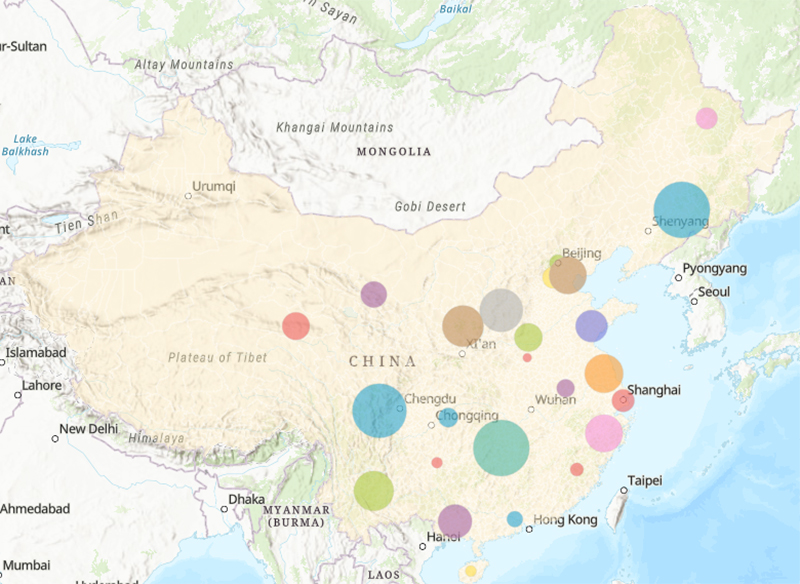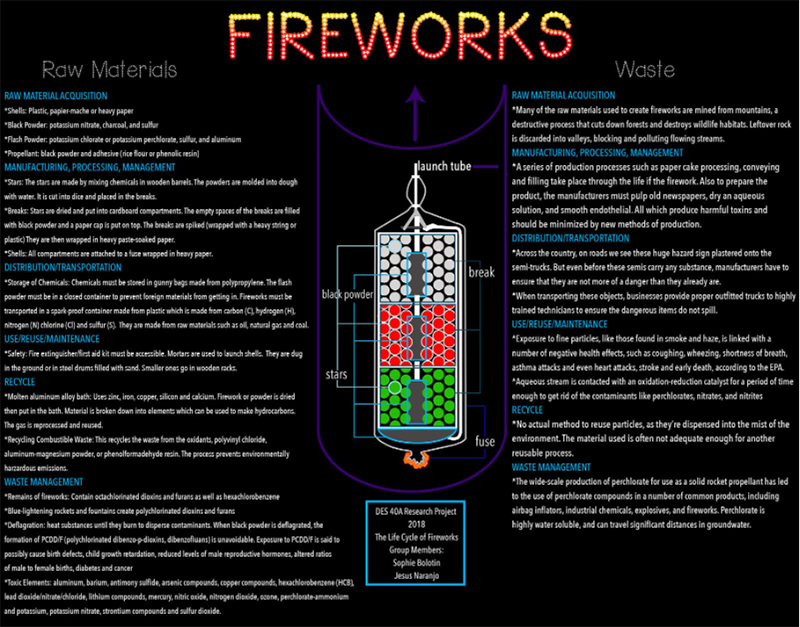The Story of Fireworks In China
Quote from admin on February 28, 2022, 9:54 am
The use of fireworks is fairly common across the world. When people want to celebrate certain festivals, they would always like to fire the fireworks to express that they are excited and happy and expect good things will happen in the future. In China, the festival is very popular in each province and people are strongly willing to reunite during the festival period and enjoy a feast dinner together. Firing the fireworks has become one of the must-do activities after the reunion dinner is finished.
[caption id="attachment_5220" align="alignnone" width="800"]
Information regarding the materials to produce the fireworks[/caption]
In the map above (image), the provinces which produce significant amount of minerals in China are given. The type of minerals produced and the annual production are given as well.
In this map, we willl find several provinces labelled with different colours. Each province is represented by a circle and the size of the circle is relevant to the amount of minearls produced by this province. The larger amount it produces, the larger the circle it has. The type of minerals produced by each province can be determined from the map as well. The places not represented with circles are not full of minerals. It is important to note that all the minerals are the sources of fireworks. The layers we have used for the map 1 include the China Provinces Boundaries 2020 (Ersi, 2020), which clearly indicates the boundaries of each province in China. The other layer is called minerals 2(Morica, 2021), which includes the information regarding the types of fireworks materials produced and amount of annual production during 2019 in different provinces in China.
The fireworks sold by the retailers are the products approved by local Fire Center and Fire Marshal at the specific regions, which means that the structure of the fireworks is designed delicately so that the safety of people when they are igniting the fireworks can be guaranteed (David,2001). The materials of the fireworks are selected carefully and their main purpose is to burn and sparkle (Alexander & Anna & Rustem, 2012). The fireworks need the oxidizers which can decay very easily and be able to allocate a significant amount of gases when the decomposition occurs (Alexander & Anna & Rustem, 2012). The most suitable oxidizers can be nitrate of ammonium (NH4NO3) and perclorate of ammonium (PCA) (NH4ClO4), which are common components of fireworks(Alexander & Anna & Rustem, 2012). In order to develop the power of explosives, SRDX (C3H6N6O6 ), HMX (C4H8N8O), ADN (NH4N(NO2 )2 ) and TNAZ (C3H4N3O6 ) were added into the fireworks in the twentieth century (Vedang & KC, 2015). Furthermore, to enhance the quality and safety of the fireworks, the materials such as the gunpowder, gunpowder in cannon and the wood powder were gradually added into the fireworks from the 19th century to 20th century (Vedang & KC, 2015). Alexander & Anna & Rustem(2012) noted that magnesium is an essential mineral that can affect the stream height and burning rate associated with the fireworks. The stream height and the burning rate of the fireworks can be altered by adjusting the content of magnesium and the particle size of the magnesium (Alexander & Anna & Rustem, 2012). In addition to magnesium, some other metals have been used in the process of producing the fireworks(Kong & Li & Li & Yin & Chen & Liu & Yuan & Zhang & Shan & Ji, 2014). The metals of copper, calcium and barium are effective to determine the colors of the fireworks, while the metals such as sodium and zinc are used to burn and help ignition(Kong & Li & Li & Yin & Chen & Liu & Yuan & Zhang & Shan & Ji, 2014). The process of producing the fireworks is very complicated and dangerous, it involves the use of inflammable minerals and radioactive materials (Kong & Li & Li & Yin & Chen & Liu & Yuan & Zhang & Shan & Ji, 2014). In the country of China, there are many provinces full with mines and these mines are likely to produce the metals needed to produce the fireworks (Kong & Li & Li & Yin & Chen & Liu & Yuan & Zhang & Shan & Ji, 2014). In the province of Shenyang, the iron mines are very popular and the annual output is also significant(Kong & Li & Li & Yin & Chen & Liu & Yuan & Zhang & Shan & Ji, 2014). In the province of Shanghai, the metal of Calcium is very abundant and it has become one of the sources to support the development of the local economy(Kong & Li & Li & Yin & Chen & Liu & Yuan & Zhang & Shan & Ji, 2014).
Basically, the fireworks consist of different minerals/ metals and the materials with complicated structure may also be needed during the process of production.
The chemical reactions are fairly important for the fireworks production. We can learn more deeply about the relationship between chemistry and fireworks production through the video above which was created by Alexandar in 2012. The chemical reactions result in gas, heat, light, and often sound(Alexandar, 2012). The chemical materials within the fireworks are responsible for the colors of the firework (Alexandar ,2012). For example, the white color is produced by Aluminum, the red color is produced by Strontium chloride, and the orange color is produced by Calcium chloride (Alexandar ,2012)
[caption id="attachment_5221" align="alignnone" width="800"]
Necessary Information Regarding the Raw Materials and Waste of Fireworks[/caption]
From the figure above, which was created by Sophie in 2018, we learn that the life cycle of the fireworks consists of multiple processes, from extracting materials , manufacturing, distribution, reuse to recycling. Different types of fireworks produce different wastes, therefore there are numerous ways to manage the emissions of toxic chemicals due to the fireworks(Sophie, 2018)

The use of fireworks is fairly common across the world. When people want to celebrate certain festivals, they would always like to fire the fireworks to express that they are excited and happy and expect good things will happen in the future. In China, the festival is very popular in each province and people are strongly willing to reunite during the festival period and enjoy a feast dinner together. Firing the fireworks has become one of the must-do activities after the reunion dinner is finished.

Information regarding the materials to produce the fireworks
In the map above (image), the provinces which produce significant amount of minerals in China are given. The type of minerals produced and the annual production are given as well.
In this map, we willl find several provinces labelled with different colours. Each province is represented by a circle and the size of the circle is relevant to the amount of minearls produced by this province. The larger amount it produces, the larger the circle it has. The type of minerals produced by each province can be determined from the map as well. The places not represented with circles are not full of minerals. It is important to note that all the minerals are the sources of fireworks. The layers we have used for the map 1 include the China Provinces Boundaries 2020 (Ersi, 2020), which clearly indicates the boundaries of each province in China. The other layer is called minerals 2(Morica, 2021), which includes the information regarding the types of fireworks materials produced and amount of annual production during 2019 in different provinces in China.
The fireworks sold by the retailers are the products approved by local Fire Center and Fire Marshal at the specific regions, which means that the structure of the fireworks is designed delicately so that the safety of people when they are igniting the fireworks can be guaranteed (David,2001). The materials of the fireworks are selected carefully and their main purpose is to burn and sparkle (Alexander & Anna & Rustem, 2012). The fireworks need the oxidizers which can decay very easily and be able to allocate a significant amount of gases when the decomposition occurs (Alexander & Anna & Rustem, 2012). The most suitable oxidizers can be nitrate of ammonium (NH4NO3) and perclorate of ammonium (PCA) (NH4ClO4), which are common components of fireworks(Alexander & Anna & Rustem, 2012). In order to develop the power of explosives, SRDX (C3H6N6O6 ), HMX (C4H8N8O), ADN (NH4N(NO2 )2 ) and TNAZ (C3H4N3O6 ) were added into the fireworks in the twentieth century (Vedang & KC, 2015). Furthermore, to enhance the quality and safety of the fireworks, the materials such as the gunpowder, gunpowder in cannon and the wood powder were gradually added into the fireworks from the 19th century to 20th century (Vedang & KC, 2015). Alexander & Anna & Rustem(2012) noted that magnesium is an essential mineral that can affect the stream height and burning rate associated with the fireworks. The stream height and the burning rate of the fireworks can be altered by adjusting the content of magnesium and the particle size of the magnesium (Alexander & Anna & Rustem, 2012). In addition to magnesium, some other metals have been used in the process of producing the fireworks(Kong & Li & Li & Yin & Chen & Liu & Yuan & Zhang & Shan & Ji, 2014). The metals of copper, calcium and barium are effective to determine the colors of the fireworks, while the metals such as sodium and zinc are used to burn and help ignition(Kong & Li & Li & Yin & Chen & Liu & Yuan & Zhang & Shan & Ji, 2014). The process of producing the fireworks is very complicated and dangerous, it involves the use of inflammable minerals and radioactive materials (Kong & Li & Li & Yin & Chen & Liu & Yuan & Zhang & Shan & Ji, 2014). In the country of China, there are many provinces full with mines and these mines are likely to produce the metals needed to produce the fireworks (Kong & Li & Li & Yin & Chen & Liu & Yuan & Zhang & Shan & Ji, 2014). In the province of Shenyang, the iron mines are very popular and the annual output is also significant(Kong & Li & Li & Yin & Chen & Liu & Yuan & Zhang & Shan & Ji, 2014). In the province of Shanghai, the metal of Calcium is very abundant and it has become one of the sources to support the development of the local economy(Kong & Li & Li & Yin & Chen & Liu & Yuan & Zhang & Shan & Ji, 2014).
Basically, the fireworks consist of different minerals/ metals and the materials with complicated structure may also be needed during the process of production.
The chemical reactions are fairly important for the fireworks production. We can learn more deeply about the relationship between chemistry and fireworks production through the video above which was created by Alexandar in 2012. The chemical reactions result in gas, heat, light, and often sound(Alexandar, 2012). The chemical materials within the fireworks are responsible for the colors of the firework (Alexandar ,2012). For example, the white color is produced by Aluminum, the red color is produced by Strontium chloride, and the orange color is produced by Calcium chloride (Alexandar ,2012)

Necessary Information Regarding the Raw Materials and Waste of Fireworks
From the figure above, which was created by Sophie in 2018, we learn that the life cycle of the fireworks consists of multiple processes, from extracting materials , manufacturing, distribution, reuse to recycling. Different types of fireworks produce different wastes, therefore there are numerous ways to manage the emissions of toxic chemicals due to the fireworks(Sophie, 2018)


